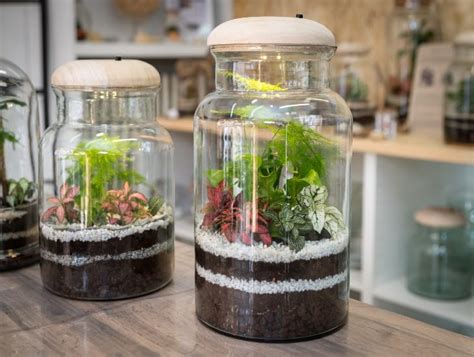Introduction
Terrariums, enchanting miniature ecosystems, have become increasingly popular as a way to bring nature indoors. However, maintaining their delicate balance requires a consistent care routine. This extensive guide will delve into the essential steps involved in terrarium care, ensuring the longevity and well-being of your miniature world.

Terrarium Care Routine VS. Neglect
Terrariums offer a unique way to connect with nature without leaving your home. However, proper care is essential to maintain their vitality. Neglecting a terrarium can lead to various problems:
- Mold Growth: Stagnant air and excess moisture create an ideal environment for mold, which can damage plants and pose health risks.
- Plant Death: Insufficient water, nutrients, or light can cause plants to wilt and eventually die.
- Pest Infestation: Neglected terrariums can attract pests, such as fungus gnats, which can damage plants and introduce diseases.
Essential Steps for Terrarium Care
To prevent these issues and ensure terrarium health, follow these crucial steps:
1. Watering
- Frequency: Water your terrarium sparingly, approximately every 2-4 weeks, depending on the plant species.
- Amount: Moisten the soil slightly, but avoid overwatering, as this can lead to root rot.
- Method: Use a spray bottle or mist the soil directly.
2. Lighting
- Duration: Provide adequate lighting for 12-14 hours per day.
- Intensity: Most terrarium plants prefer bright, indirect light.
- Type: Use full-spectrum LED grow lights to mimic natural sunlight.
3. Temperature and Humidity
- Temperature: Aim for temperatures between 65-85°F (18-29°C).
- Humidity: Most terrariums require medium to high humidity levels of 50-80%.
- Methods: Mist the terrarium regularly, use a humidifier, or place a tray of water inside.
4. Fertilizing
- Frequency: Fertilize your terrarium plants every 3-4 months.
- Amount: Use a balanced, diluted liquid fertilizer.
- Method: Mix the fertilizer into the water before watering.
5. Trimming and Pruning
- Frequency: Regularly trim and prune overgrown plants to maintain a healthy ecosystem.
- Technique: Remove dead or dying leaves and stems, and trim back any plants that are crowding others.
6. Pest Control
- Prevention: Keep your terrarium clean and free of debris to prevent pest infestations.
- Treatment: If pests are present, use organic pest control methods, such as neem oil or insecticidal soap.
Troubleshooting Common Terrarium Problems
Problem: Mold Growth
– Cause: Overwatering or poor air circulation.
– Solution: Reduce watering frequency, increase ventilation, and remove moldy plants and soil.
Problem: Plant Death
– Cause: Insufficient water, nutrients, or light.
– Solution: Adjust watering schedule, fertilize, or provide more light.
Problem: Pest Infestation
– Cause: Neglect or poor sanitation.
– Solution: Clean the terrarium, remove infested plants, and use organic pest control methods.
Tips for a Thriving Terrarium
- Choose Compatible Plants: Select plants with similar light, water, and temperature requirements.
- Provide a Drainage Layer: Use rocks or gravel at the bottom of the terrarium to prevent waterlogging.
- Use Activated Charcoal: Add a layer of activated charcoal to the terrarium soil to absorb toxins.
- Monitor Regularly: Observe your terrarium for signs of stress or problems.
- Enjoy the Benefits: Terrariums offer calming effects, air purification, and a touch of nature in your home.
Conclusion
A healthy terrarium requires a dedicated care routine, but the rewards are well worth the effort. By following these essential steps, you can create and maintain a thriving miniature ecosystem that will bring joy and tranquility to your indoor space for years to come. Embrace the role of caretaker and witness the transformative power of nature within the confines of your own home.





















